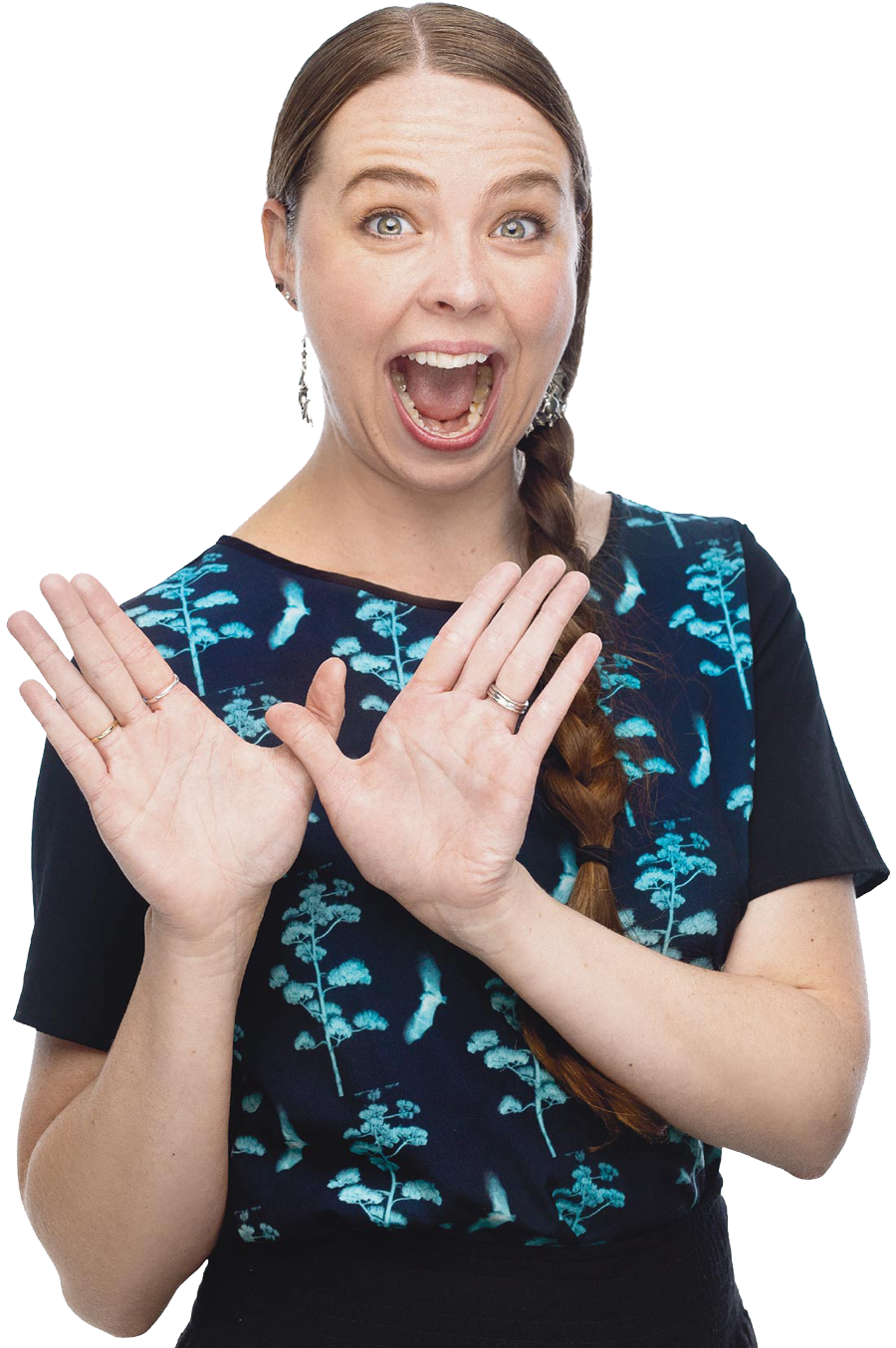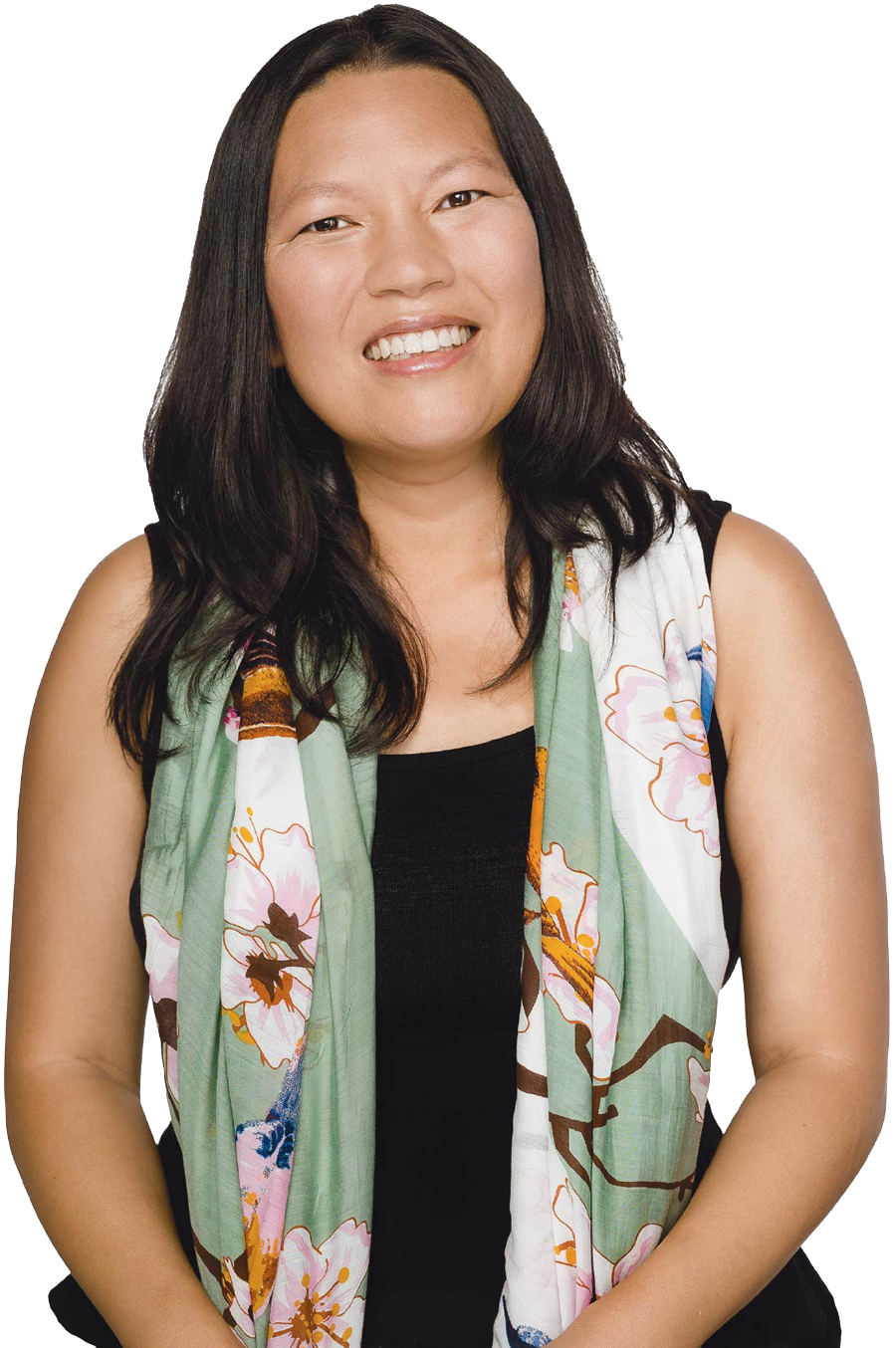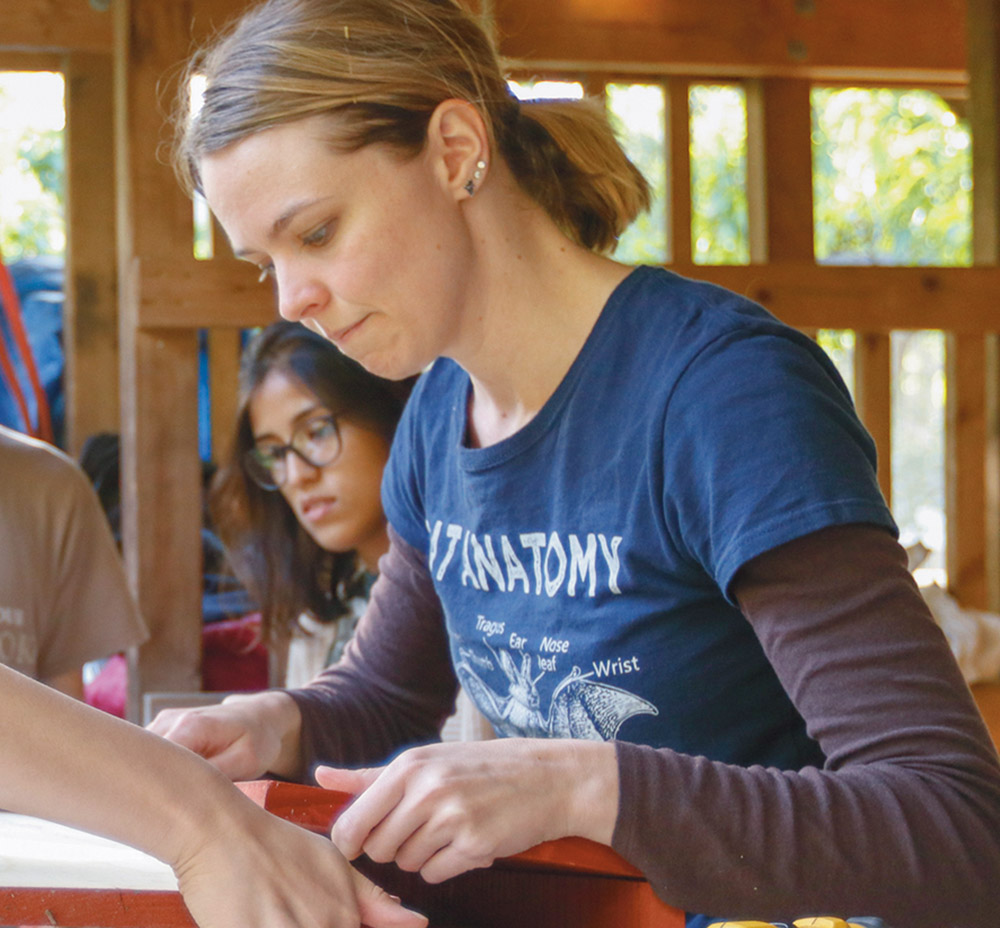
I Am a Scientist



r. Kristen Lear collects refrigerator magnets when she travels, is a prolific list-maker, loves weightlifting and yoga, and believes that art can help change the way we feel about wildlife. Dr. Lear, Bat Conservation International (BCI) Agave Restoration Program Manager, is one of three BCI scientists featured in a new, dynamic, and innovative outreach program called “I Am A Scientist” (IAAS), intended to guide middle school and high school students toward careers in science.
Dr. Lear—along with Dr. Melquisedec Gamba-Ríos, BCI Endangered Species Interventions Fellow, and Dr. Tina Cheng, BCI Data Scientist—are scientists with impressive doctoral degrees, awards, and accolades. But it is their work in bat conservation, along with their other interesting pursuits, that makes them great model scientists for the program, according to IAAS co-creator Stephanie Fine Sasse, who established the program with Dr. Nabiha Saklayen.
“The ‘why’ behind IAAS is the need to break down psychological barriers on who can ‘do’ science,” Sasse says. “The aim is to show how science can be applied beyond traditional stereotypes, beyond that image of a scientist in a white coat working in a sterile lab.”
Sasse says the BCI scientists were chosen for their relatable and diverse backgrounds. “BCI illustrates real work on the ground and takes science out of the ivory tower. Plus, bats are cool and interesting,” she adds.
Sasse might be called a science evangelist. She’s a Harvard-educated writer, researcher, and “experience designer” who was a co-organizer of global March for Science events in 2017 and 2018. The creators began working on the IAAS concept in 2016, expanding it during the pandemic, by building upon principles from storytelling and learning sciences.

Dr. Lear, for instance, manages planting and restoring corridors of agave to save three Threatened nectar-feeding bat species, including the Endangered Mexican long-nosed bat (Leptonycteris nivalis). In her personal time, Dr. Lear produces and sells a line of clothing centered around bat patterns. Dr. Gamba-Ríos, an avid nature photographer, monitors the habitat of Endangered Florida bonneted bats (Eumops floridanus), the rarest bat species in the United States. Dr. Cheng, a new mother, is at the forefront of collecting crucial data on White-nose Syndrome, a highly infectious disease that has killed millions of bats.
Sometimes, you simply know you will be a scientist
In middle school, Dr. Lear wrote book reports about Jane Goodall and built four bat houses for her Girl Scout Silver Award. Pursuing a Silver Award requires Girl Scouts to identify a cause they are passionate about that makes the world a better place. Now, in her work for BCI, Dr. Lear shows Girl Scout troops and other community groups how to build their own bat houses.
The IAAS program dovetails with Lear’s public presentations and outreach. In addition to her work rebuilding and sustaining migratory bat foraging routes, Dr. Lear is frequently invited to promote bat conservation at special events. For children’s events, Dr. Lear sets up a mist net with toy bats and invites children to gently extract a bat, then swaddle, weigh, and measure it with tools used by bat scientists. Showing children and adults the possibility of science is gratifying. “The greatest compliment is when someone gets so excited, they do their own bat project,” she says.
—Dr. Melquisedec Gamba-Ríos
Sometimes, an unexpected twist plays a role
In Colombia, Dr. Gamba-Ríos grew up hiking, camping, and rock climbing. In his early 20s, when his family moved from Colombia to Costa Rica, he wanted to incorporate his love of being outdoors with his studies, and decided to pursue a college degree in geology. Dr. Gamba-Ríos recounts that the Costa Rican college he applied to had a year-long waiting list for the geology program, but immediate acceptance into the ecology program. “It was my good fortune,” he says. “I can’t imagine doing anything but what I am doing now: working with bats.”
In his first college semester, Dr. Gamba-Ríos found himself on a class field trip on the Caribbean side of Costa Rica, handling a bat for the first time. “Honestly, when I was told I’d be collecting data on fruit-eating bats, I’d never seen a bat close-up on anything but YouTube,” he laughs.
Over the next 10 years, Dr. Gamba-Ríos completed his undergraduate work and conducted research in Costa Rica. Later, as he completed his Ph.D. at the University of Tennessee-Knoxville, Dr. Gamba-Ríos expanded his scientific studies to antipredator behaviors in bats and was awarded a BCI Student Scholar grant for his research.
Today, Dr. Gamba-Ríos is a neotropical bat specialist, tracking the foraging and roosting behavior of Florida bonneted bats as he traipses through the wetlands and remnants of pine rockland habitat dotted throughout the greater Miami area. In 2013, the U.S. Fish and Wildlife Service listed Florida bonneted bats as Endangered due to impacts from intensifying storms caused by climate change, and rampant development throughout its distribution range. “The good news is that we can save this bat by understanding its behavior and how it is adapting,” Dr. Gamba-Ríos said in a recent interview on PBS.
While he’s always eager for bats to take center stage, he doesn’t crave the spotlight himself. “Quite frankly, I’m shy. I don’t like attention or giving interviews, but I recognize a responsibility to share my work,” he says.
Dr. Gamba-Ríos adds he is honored to be featured in the IAAS program and that he hopes to inspire all types of students into looking into careers in science and bat conservation.

Student Challenge: Save the Florida Bonneted Bat
You are the lead scientist working in Miami on a critical mission: to bring the Florida bonneted bat back from the brink of extinction. Currently, scientists believe that the populations are small, but it is not clear how many are left. Your job is to analyze the data collected with your special bio detectors to figure out what dangers the bats are facing and come up with a plan to get them back on track.
We’re all scientists, at heart
Dr. Cheng refers to her toddler son, Leo, as a good example of how science is natural to human development. “Babies are keen explorers and experimenters. Watching Leo discover an ant for the first time is watching the process of discovery. I see him puzzle over an ant and apply questions: ‘What is this? Why does it move like that? What happens if I pick it up?’ And then there’s the question many toddlers, including Leo, employ: ‘How does it taste?’” she laughs.

When she was in middle school and high school, Dr. Cheng was disillusioned with how humans were changing the planet. “I had a grim view of how we humans had messed up the planet,” she says. During high school, she was selected to participate in an environmental camp at Yosemite National Park. The experience was pivotal. “One of the memorable lessons was learning about water and what it takes to source it, conserve it. My thinking shifted: If humans can mess up the planet, humans can contribute to the planet,” she says.
—Dr. Tina Cheng
Dr. Cheng and her husband, Washington Plada, a classical music composer from Uruguay, are focused on teaching their young son multiple languages, lessons from diverse cultures, and how to explore the world. “We are in a beautiful age of information-sharing when everyone can operate as a scientist. We have the ability to find factual sources, find evidence, and establish scientific premises.”
- I Am a Scientist at iamascientist.info
- Kristen Lear at iamascientist.info/kristen-lear
- Melquisedec Gamba-Ríos at iamascientist.info/melqui-gamba-rios
- Tina Cheng at iamascientist.info/tina-cheng